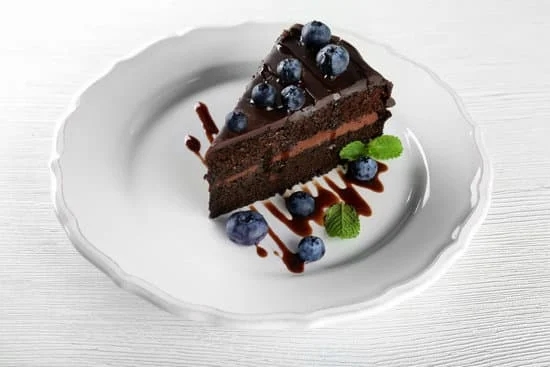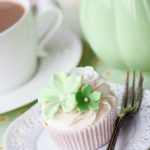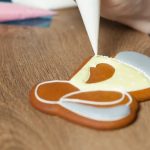Are you looking for a simple and effective way to enhance your cake decorating skills? Look no further. In this article, we will show you how to make gum glue for cake decorating. Gum glue is an essential tool in the world of cake decoration as it helps adhere decorations like fondant effortlessly.
Gum glue is a versatile adhesive commonly used in the realm of cake decorating. It serves as the perfect solution for ensuring intricate details stick onto cakes securely, adding a professional touch to your creations. Without gum glue, delicate decorations may not stay in place, compromising the overall look of your masterpiece.
By following our step-by-step instructions and tips, you’ll be able to create your own gum glue at home with ease. With just a few simple ingredients and some handy techniques, you can elevate your cake decorating skills to new heights. So, let’s get started on mastering the art of making gum glue for your next baking project.
Ingredients Needed
Making gum glue for cake decorating is a simple and essential skill for any baker or cake decorator. The ingredients needed to make gum glue are easily accessible and can be found in most baking stores or online. Here is a list of items required to make gum glue at home:
Ingredients
1. Tylose powder: Also known as CMC powder, this is the main ingredient for making gum glue. It helps to create a strong adhesive that will hold your fondant decorations in place.
2. Water: You will need water to mix with the Tylose powder to form the gum glue consistency. Make sure the water is at room temperature for best results.
3. Small microwave-safe bowl: A small bowl that can be used in the microwave to heat up the water for mixing with the Tylose powder.
4. Measuring spoons: Accurate measurements are key when making gum glue, so having measuring spoons on hand is essential.
5. Spoon or whisk: You will need a utensil to mix the Tylose powder with water until it forms a smooth, thick paste.
Now that you have all the necessary ingredients, you are ready to start making your own gum glue for cake decorating. Follow the step-by-step instructions below to ensure success in your baking projects.
Step-by-Step Instructions
Gum glue is a crucial element in the toolkit of any cake decorator, as it acts as a strong adhesive for fondant and gum paste decorations. Making your own gum glue at home is not only cost-effective but also ensures that you have a fresh batch ready whenever you need it. To make gum glue for cake decorating, you will need a few simple ingredients that are easy to find in most craft or baking stores.
To make gum glue, start by gathering together ½ teaspoon of Tylose or CMC powder and 2 tablespoons of warm water. The temperature of the water is essential, as it should be warm but not boiling hot. In a small bowl, sprinkle the Tylose powder over the warm water and mix it well with a spoon. Make sure that there are no lumps remaining in the mixture, as this could affect the quality of your gum glue.
Once you have mixed the Tylose powder and water thoroughly, let the mixture sit for about an hour at room temperature. During this time, the mixture will thicken into a gel-like consistency, which is exactly what you want for your gum glue. After an hour has passed, give the mixture another good stir to ensure that it is well combined. Your homemade gum glue is now ready to use for attaching fondant decorations to your cakes.
Tips for Success
Use High-Quality Ingredients
When making gum glue for cake decorating, it is essential to use high-quality ingredients to ensure the best results. Opt for food-grade tylose powder or gum tragacanth powder, as these will provide the necessary adhesive properties for your gum glue. Using fresh egg whites is also crucial, as old or expired eggs may affect the consistency and shelf life of the glue.
Consistency Is Key
One of the most important aspects of making gum glue for cake decorating is achieving the right consistency. The ideal gum glue should be thick and tacky, similar to syrup. If your gum glue is too thin, add a bit more tylose powder gradually until you reach the desired thickness. On the other hand, if your gum glue is too thick, you can thin it out by adding a few drops of water and mixing well.
Allow Proper Drying Time
After using gum glue to attach fondant decorations or pieces onto your cake, it is crucial to allow proper drying time. This will ensure that the pieces stay in place and do not slide off while you are working on other aspects of your cake.
Depending on the humidity and temperature in your workspace, it may take anywhere from 30 minutes to several hours for the gum glue to dry completely. Be patient and avoid touching or moving the decorated areas until they are fully set.
Different Uses
When it comes to cake decorating, gum glue is not just limited to sticking fondant onto cakes. There are many creative and innovative ways to utilize gum glue in your cake decorating projects. One of the popular alternative uses for gum glue is creating edible decorations for cakes and cupcakes. By using gum glue as an adhesive, you can easily attach edible flowers, sugar pearls, or even small fondant figurines to your baked creations.
Moreover, gum glue can also be used to create intricate patterns and designs on cakes. You can mix edible dust or food coloring with the gum glue to make a colored paste that can be piped or painted onto your cake. This technique allows for more detailed and customizable decorations that can truly make your cakes stand out. Additionally, you can use gum glue as a sealant for delicate sugar work to protect it from humidity or breakage.
Furthermore, another creative way to use gum glue in cake decorating is in assembling tiered cakes. When stacking multiple layers of cake on top of each other, a dab of gum glue between each layer can provide extra stability and prevent shifting during transportation. This ensures that your carefully crafted cake stays intact until it reaches its final destination.
| Gum Glue Use | Description |
|---|---|
| Edible Decorations | Attach edible flowers, sugar pearls, or fondant figurines to cakes |
| Intricate Designs | Create detailed patterns and designs by mixing colors with gum glue |
| Tiered Cake Assembly | Use gum glue between layers for stability when stacking tiered cakes |
Storage and Shelf Life
Gum glue is a crucial element in cake decorating, especially when working with fondant or gum paste decorations. It acts as an edible adhesive that helps pieces stick together and ensures your creations are structurally sound. Making your gum glue at home is not only cost-effective but also allows you to customize the consistency to suit your specific needs.
To make your own gum glue for cake decorating, you will need the following ingredients:
- Tylose powder
- Warm water
- A small container or bowl for mixing
And here is a simple step-by-step guide on how to make gum glue:
- Start by adding a small amount of warm water to your container.
- Slowly sprinkle Tylose powder into the water while stirring continuously until it forms a thick gel-like consistency.
- Allow the mixture to sit for about 10-15 minutes until it thickens further before using it as needed in your cake decorating projects.
When making gum glue at home, it is essential to store it properly to maintain its effectiveness. Store any leftover gum glue in an airtight container at room temperature away from direct sunlight. With proper storage, homemade gum glue can last for up to three months, ensuring you always have some on hand for your next creative project.
By mastering the art of making gum glue at home, you can elevate your cake decorating skills and bring your sweet creations to life. Remember to follow the steps carefully and experiment with different consistencies to find what works best for your unique style and projects. Give homemade gum glue a try and see the difference it can make in achieving professional-looking results.
Troubleshooting
When making gum glue for cake decorating, there may be times when you encounter some common problems that can affect the consistency and effectiveness of the glue. One of the most common issues is that the gum glue ends up too thick or too thin, making it difficult to work with.
If your gum glue turns out too thick, you can try adding a few drops of water and stirring until you reach the desired consistency. On the other hand, if your gum glue is too thin, you can add a bit more powdered sugar to thicken it up.
Another problem that many people face when making gum glue for cake decorating is air bubbles forming in the mixture. These air bubbles can cause uneven drying and create imperfections in your decorations.
To prevent air bubbles from forming in your gum glue, make sure to mix the ingredients slowly and gently, avoiding any vigorous stirring or shaking. If air bubbles do appear, you can try tapping the container on a flat surface to release them before using the gum glue.
Additionally, some individuals may find that their gum glue becomes too sticky or dries out too quickly when working with it. To address this issue, you can try adding a small amount of cornstarch or tylose powder to reduce stickiness and improve handling.
It is also important to keep your gum glue covered with plastic wrap or a lid when not in use to prevent it from drying out prematurely. By following these troubleshooting tips and solutions, you can ensure that your gum glue is smooth, easy to work with, and perfect for all your cake decorating needs.
Conclusion
In conclusion, mastering the art of creating gum glue for cake decorating is a skill that every baker should have in their repertoire. This simple yet essential adhesive not only helps in sticking fondant to cakes but also opens up a world of creative possibilities for intricate decorations and designs. By following the step-by-step instructions and incorporating the tips for success provided in this guide, you can ensure that your gum glue turns out perfectly every time.
The versatility of gum glue extends beyond just sticking fondant. From attaching edible decorations to securing tiered cakes, this homemade adhesive is a must-have for any cake decorator. Experimenting with different uses of gum glue can elevate your baked creations to the next level and add that professional touch that will surely impress your friends, family, or clients.
So, the next time you embark on a cake decorating project, don’t forget to whip up a batch of homemade gum glue using the ingredients listed and the easy-to-follow instructions provided. Your cakes will thank you for it.
Remember, practice makes perfect, so don’t be discouraged if it takes a few tries to get the hang of it. With patience and perseverance, you’ll soon be confidently using gum glue like a pro in all your cake decorating endeavors.
Frequently Asked Questions
How Do You Make Edible Glue for Cake Decorating?
Edible glue is commonly made for cake decorating by mixing together water and tylose powder or CMC powder until it forms a thick, sticky consistency. This glue can be used to attach decorations like fondant or gum paste onto cakes without leaving any residue.
How Do You Make Gumpaste Stick?
When making gumpaste stick to surfaces or other gumpaste pieces, it’s important to use a small amount of water as an adhesive. Adding edible glue or corn syrup to the surface before applying the gumpaste can also help it adhere better. Properly kneading and rolling out the gumpaste can also enhance its stickiness.
What Is a Good Substitute for Edible Glue?
A good substitute for edible glue in cake decorating is a mixture of powdered sugar and water, which creates a simple and effective adhesive for attaching fondant or gum paste decorations onto cakes. Another alternative is using clear piping gel as a sticky substance for cake decorating purposes.

Welcome to our cake decorating blog! My name is Destiny Flores, and I am the proud owner of a cake decorating business named Cake Karma. Our mission is to provide delicious, beautiful cakes for all occasions. We specialize in creating custom cakes that are tailored specifically to each customer’s individual needs and tastes.





